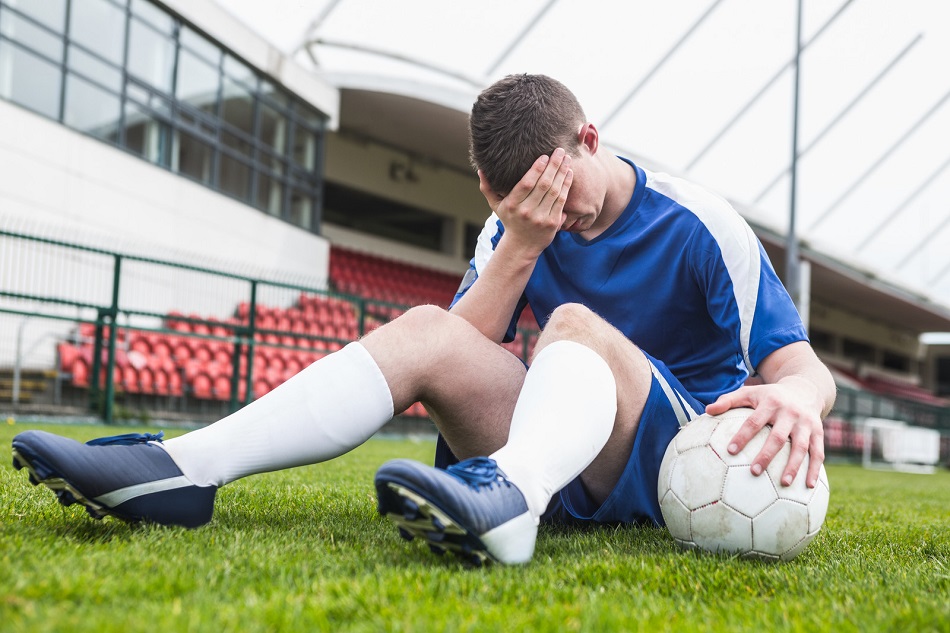
Overtraining syndrome, also called burnout and staleness, is caused by many hours of training in a short period.
It can affect athletes at all levels who participate in collegiate sports. Athletes usually exhibit loss of motivation, frequent injuries, and fatigue when suffering from overtraining syndrome.
Overtraining results from lack of recovery between training sessions, and difficulty switching from a concentric to an eccentric contraction. In addition to mood changes, big warning signs for overtraining are loss of appetite and sickness.
Athletes who experience burnout injuries may also have higher resting heart rates, increased resting blood pressure, and decreased body temperature.
Risks Factors for Burnouts
Delayed Onset Muscle Soreness (DOMS) is caused by the body being unable to repair itself after training.
For instance, as your body loses the ability to recover, the levels of anabolic hormones (which build new tissue and muscle) drop while the levels of catabolic hormones (which destroy existing tissue) rise.
Since these reactions are responsible for repairing damaged cells, more stress is put on the body’s systems. Therefore, it cannot keep up with the recovery process. This leaves you feeling undertrained and unmotivated to continue training.
This is because your body can no longer keep up with demands. The effects of overtraining reach a plateau that varies from person to person but result in impaired exercise performance, illness, and injury.
In recent years, there has been an increase in the number of reported cases of Burnout Syndrome. Athletes, children, and teens alike who have succumbed to this syndrome have suffered from decreased motivation, affecting their performance.
This trend is alarming among young athletes, therefore more needs to be done to educate people on how to curb this nuisance. Yet, burnout can be traced back to certain conditions, which may be difficult to avoid for some athletes.
These factors include tiredness after training, over-training, social pressures from parents or coaches, injury, and competition anxiety. In addition, you may have noticed a discrepancy in training volumes where more time is dedicated to one training domain than another, leading to imbalance.
Treatment for Burnout in Athletes
The most important element to treating burnout is rest. It is advisable that the athlete stops participation in training and competition for at least 4-12 weeks to recover. Aerobic exercise can be encouraged during this time.
The activity should not be related to the sport that the athlete experiences burnout in.
Conclusion
Hopefully, you now have a better idea of the dangers of burnout injuries. This can be a serious problem for athletes and coaches across every level of play. As we move into the next year, take the necessary precautions to avoid burnout injuries.
Encourage your players to get plenty of rest, and make sure they are performing daily dynamic mobility work as well. By doing so, you won’t only help reduce your risk of burnout injuries –you will also perform more efficiently on the fields of play and in the gym, improving your performance in the process.


 Uncovering the Realms of Property Division During a Divorce Case
Uncovering the Realms of Property Division During a Divorce Case  Estate Planning After Divorce: Protecting Your Financial Future in Boston
Estate Planning After Divorce: Protecting Your Financial Future in Boston  The Role of Evidence in Winning a Car Accident Claim in Atlanta
The Role of Evidence in Winning a Car Accident Claim in Atlanta  Exploring the EB-5 Investor Visa Program and Immigration Pathways in 2025
Exploring the EB-5 Investor Visa Program and Immigration Pathways in 2025  Workers’ Compensation Rights and Employee Protections in Washington State
Workers’ Compensation Rights and Employee Protections in Washington State  Smart Strategies a Harlem Personal Injury Lawyer Uses to Maximize Car Accident Settlements
Smart Strategies a Harlem Personal Injury Lawyer Uses to Maximize Car Accident Settlements